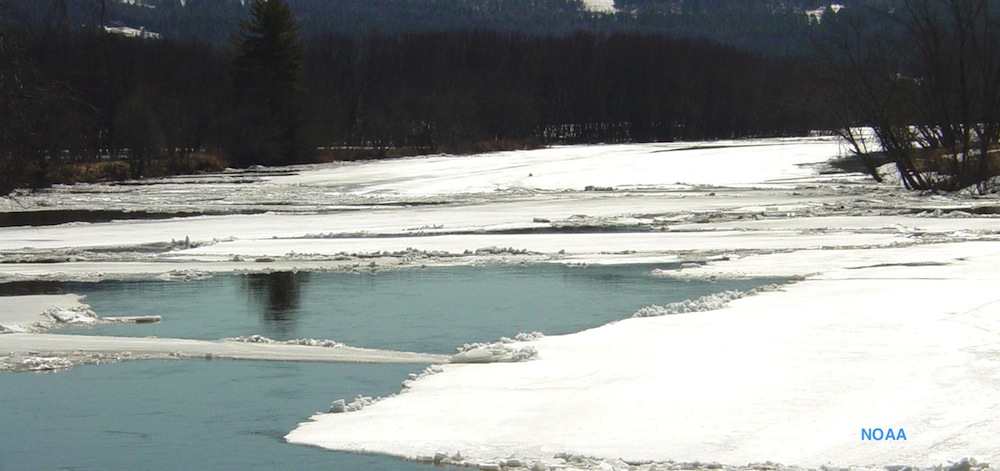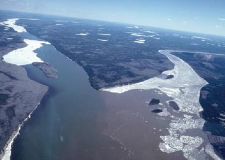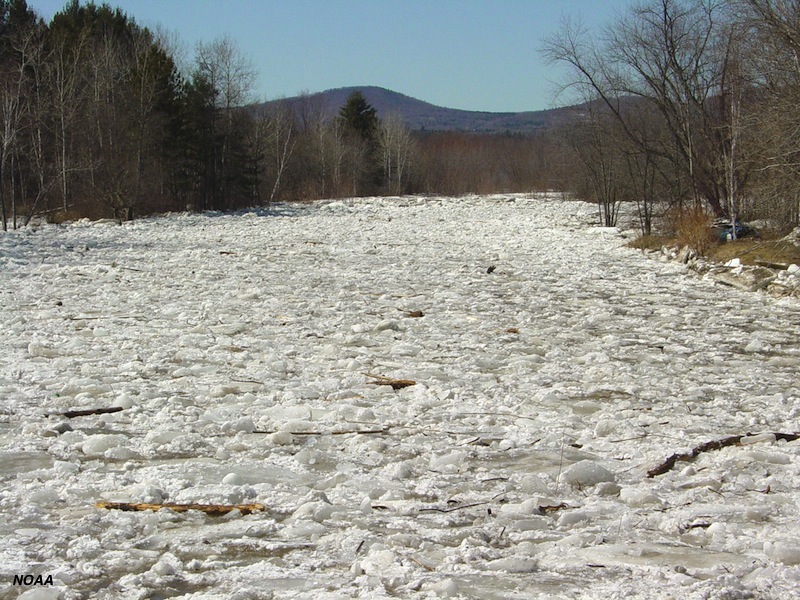About Lake and River Ice |
 |
Lake and river ice, also commonly referred to as freshwater ice or floating freshwater ice, is ice that forms on the surface of freshwater bodies when the surface water temperature falls just below 0˚C. Lake and river ice play a key role in the physical, biological, and chemical processes of cold region freshwater. The presence of freshwater ice also has economic implications ranging from transportation (ice-road duration, open-water shipping season) to the occurrence and severity of ice-jam flooding that often causes serious damage to infrastructure and property.
In the arctic and sub-arctic regions of the Northern Hemisphere, lakes are a major component of the terrestrial landscape. Estimates of their areal coverage range from 15% to 40% depending on location. Lakes range from those that are little more than 1 m deep but often several square kilometers in surface area, to those which are very deep and very large. Lakes have the highest evaporation rates of any high latitude surface. Shallow lakes warm quickly in spring and have very high evaporation rates until they freeze in the fall. Large deep lakes take substantial periods to warm, but stay thawed into early winter, and their total evaporation amounts are significantly greater.
River ice is also one of the major components of the cryosphere. It affects an extensive portion of the global hydrologic system, particularly in the Northern Hemisphere where ice cover develops on 29% of total river length and seasonal ice affects 58%. River-ice duration and break-up exerts significant control on the timing and magnitude of extreme hydrologic events such as low flows and floods.
Seasonal ice cover grows and decays in response to heat transfer through the ice surface layer that is affected by net radiation, surface albedo, on-ice snow depth and density, air temperature, wind speed, and water heat flux. Although freshwater ice formation and decay processes are influenced by numerous physical and climatological factors, it has been determined that the timing of break-up and freeze-up correlates best with air temperature during the preceding weeks to months of the event.
 |
 |



